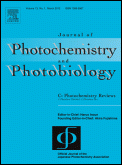
JOURNAL OF PHOTOCHEMISTRY AND PHOTOBIOLOGY C-PHOTOCHEMISTRY REVIEWS
Scope & Guideline
Illuminating Innovations in Photochemistry
Introduction
Aims and Scopes
- Photocatalysis and Photochemical Reactions:
The journal extensively covers advancements in photocatalysis, including the development of new photocatalysts and mechanisms of photocatalytic processes aimed at environmental remediation and energy conversion. - Nanotechnology in Photochemistry:
Research on nanocarriers, nanostructured materials, and their role in enhancing photochemical reactions and therapies is a key focus, exploring how nanotechnology can improve drug delivery and photodynamic therapy. - Photobiology and Biological Applications:
The intersection of photochemistry and biology is emphasized, with studies on how light interacts with biological systems, including applications in medicine and environmental science. - Materials Science Related to Photochemical Applications:
The journal publishes works on the design and synthesis of new materials that exhibit novel photochemical properties, including photonic devices, sensors, and optoelectronic applications. - Theoretical and Computational Studies:
Theoretical insights into photochemical processes, including molecular dynamics and computational modeling, are also a significant part of the research scope, providing a deeper understanding of mechanisms at play.
Trending and Emerging
- Photoresponsive Nanocarriers and Drug Delivery:
Recent publications emphasize the development of photoresponsive nanocarriers for targeted drug delivery, particularly in cancer therapy, highlighting a trend towards precision medicine facilitated by photochemical techniques. - Photodynamic Therapy Innovations:
There is a growing interest in photodynamic therapy, with innovative approaches utilizing molecular and nanoparticulate agents, guided imaging techniques, and near-infrared light to enhance therapeutic efficacy. - Sustainable Photocatalysis:
Emerging themes include the use of photocatalysis for environmental remediation and sustainable chemical processes, particularly in converting waste into valuable products, reflecting a heightened focus on sustainability. - Advanced Materials for Photonic Applications:
Research into new materials, such as metal-organic frameworks and luminescent compounds, is trending, particularly those that can be applied in sensors, photovoltaics, and environmental applications. - Integration of Photochemistry with Other Disciplines:
An increasing number of publications highlight the integration of photochemistry with fields such as nanotechnology, biochemistry, and materials science, showcasing interdisciplinary approaches to solve complex challenges.
Declining or Waning
- Traditional Photochemical Methods:
There is a noticeable reduction in articles focusing on conventional photochemical methods, as researchers increasingly explore novel techniques and materials that offer enhanced efficiency and specificity. - Basic Photochemistry without Application Focus:
Papers that delve into the fundamental aspects of photochemistry without clear applications or implications for technology or biology have become less frequent, as the journal's emphasis shifts towards applied research. - Dye-Sensitized Solar Cells:
Research specifically on dye-sensitized solar cells has seen a decline, as the field evolves towards more advanced materials and technologies such as perovskite solar cells, which are gaining more attention. - Static Photophysical Studies:
There has been a waning interest in purely static studies of photophysical properties, with a shift towards dynamic and interactive studies that explore real-time applications and interactions.
Similar Journals

Bulletin of the University of Karaganda-Physics
Igniting Conversations in the World of Physics.Bulletin of the University of Karaganda-Physics is a distinguished open-access journal published by KARAGANDA STATE UNIVERSITY, dedicated to advancing the field of physics since its inception in 1996. With an ISSN of 2518-7198, the journal offers an essential platform for researchers, professionals, and students to disseminate and access high-quality, peer-reviewed articles covering a wide array of topics within physics. Operating from Kazakhstan, this journal plays a pivotal role in promoting scientific communication in the region and beyond by providing unrestricted access to its publications. Although specific metrics such as HIndex and Scopus rankings are currently unavailable, the Bulletin is committed to maintaining rigorous academic standards and fostering an engaging scholarly community. The journal not only aims to contribute to the academic literature but also to stimulate discourse among physicists and related disciplines, making it a valuable resource for anyone invested in understanding the complexities and advancements within the world of physics.
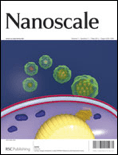
Nanoscale
Elevating Research Standards in Nanotechnology.Nanoscale is a premier academic journal published by the Royal Society of Chemistry, dedicated to advancing the field of nanoscience and nanotechnology. With both its ISSN (2040-3364) and E-ISSN (2040-3372) ensuring wide accessibility, the journal is renowned for its high-impact research contributions, reflected in its impressive 2023 Impact Factor and prestigious Q1 ranking in both Materials Science (Miscellaneous) and Nanoscience and Nanotechnology categories. Since its inception in 2009, Nanoscale has fostered a collaborative platform where leading researchers from around the globe share their innovative findings across a multitude of topics spanning from material synthesis to applications in nanotechnology. The journal not only serves as a valuable resource for professionals, researchers, and students but also actively engages the academic community in discussing emerging trends, thus shaping the future of nanoscience. Situated in the heart of the UK at Thomas Graham House, Science Park, Milton Rd, Cambridge CB4 0WF, Nanoscale remains a key publication for those looking to keep abreast of the latest breakthroughs in an ever-evolving field.
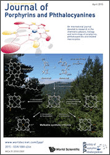
JOURNAL OF PORPHYRINS AND PHTHALOCYANINES
Illuminating the Path of Advanced Material ResearchJOURNAL OF PORPHYRINS AND PHTHALOCYANINES, published by WORLD SCIENTIFIC PUBL CO PTE LTD, is an influential peer-reviewed journal dedicated to advancing the field of porphyrins and phthalocyanines, key compounds in both chemistry and materials science. With an ISSN of 1088-4246 and an E-ISSN of 1099-1409, this journal has been a vital resource since its inception in 1997 and is expected to continue until 2024. The journal holds a respectable position in the academic landscape, categorized in the Q3 quartile for miscellaneous Chemistry journals and ranked #252 out of 408 in the general chemistry category according to Scopus, reflecting a growing impact in the field despite its current percentile standing at 38th. JOURNAL OF PORPHYRINS AND PHTHALOCYANINES seeks to publish original research articles, reviews, and critical studies that explore the synthesis, characterization, and applications of these versatile compounds, which play essential roles in numerous scientific disciplines, from catalysis to materials development. This journal is an indispensable platform for researchers and professionals seeking to disseminate their findings, engage with contemporary discussions, and stay informed about cutting-edge advancements in porphyrin and phthalocyanine research.
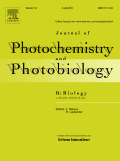
JOURNAL OF PHOTOCHEMISTRY AND PHOTOBIOLOGY B-BIOLOGY
Unveiling the Secrets of Light in Biological ContextsJOURNAL OF PHOTOCHEMISTRY AND PHOTOBIOLOGY B-BIOLOGY is a prestigious academic journal published by Elsevier Science SA in the Netherlands, focusing on the interdisciplinary domains of photochemistry and photobiology. With a notable impact factor and distinguished recognition across multiple disciplines, including Q1 rankings in Biophysics, Radiation, and Radiological and Ultrasound Technology, this journal is at the forefront of research dissemination in its field. The publication spans over three decades, from 1987 to 2024, reflecting its long-standing commitment to advancing knowledge in areas critical to both fundamental and applied science. Researchers and professionals are encouraged to submit original research articles, reviews, and short communications that explore the interactions between light and biological systems, with the aim of fostering innovative solutions impacting health and technology. Although it operates on a subscription model, this journal remains a vital resource for all those engaged in the scientific exploration of these dynamic fields.

PHOTOCHEMICAL & PHOTOBIOLOGICAL SCIENCES
Driving Interdisciplinary Collaboration in Photochemical SciencesPHOTOCHEMICAL & PHOTOBIOLOGICAL SCIENCES is a distinguished peer-reviewed journal published by SpringerNature, focusing on the rigorous exploration of photochemical and photobiological processes that impact various scientific disciplines. Established in 2002, this journal serves as a vital resource for researchers and professionals in the fields of chemistry, biology, and environmental sciences, addressing fundamental questions as well as practical applications. With an impressive Scopus ranking of #67 out of 189 in the category of Physical and Theoretical Chemistry, it holds a significant position within the academic community, evidenced by its Q2 quartile ranking in 2023. Although it operates under a subscription model, the journal encourages broad engagement from scholars by hosting various articles that contribute to the understanding of light-mediated chemical processes and their relevance to ecological and biological phenomena. The journal’s objectives include fostering innovative research, supporting interdisciplinary collaboration, and disseminating knowledge that drives advancements in both academic and applied sciences. By bridging theoretical insights with practical applications, PHOTOCHEMICAL & PHOTOBIOLOGICAL SCIENCES continues to make substantial contributions to the scientific discourse surrounding photochemistry and photobiology.
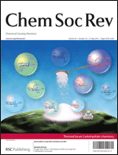
CHEMICAL SOCIETY REVIEWS
Fostering Global Dialogue in ChemistryCHEMICAL SOCIETY REVIEWS, published by the Royal Society of Chemistry, serves as an essential platform for researchers, professionals, and students in the field of chemistry. Since its inception in 1972, this prestigious journal has maintained its status as a leading publication, currently positioned in the Q1 category for Chemistry (miscellaneous) and ranking #2 out of 408 journals in the field of General Chemistry on Scopus, with an impressive 99th percentile recognition. With a focus on comprehensive reviews that synthesize key advancements and methodologies, it promotes open discussion and critical analysis crucial for driving innovation within the discipline. Although it operates under a subscription model, the journal strives to foster knowledge dissemination among the global chemistry community, ensuring accessibility to cutting-edge research and insights that shape the future of chemical sciences through its extensive array of articles.
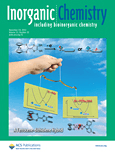
INORGANIC CHEMISTRY
Exploring Innovative Pathways in Inorganic ResearchInorganic Chemistry, published by the American Chemical Society, stands at the forefront of the field of inorganic and physical chemistry, boasting an impressive impact in the academic community with a 2023 classification in the Q1 quartile across multiple categories including Inorganic Chemistry and Miscellaneous Chemistry. Since its inception in 1962, this esteemed journal has been a crucial platform for disseminating groundbreaking research, innovative methodologies, and comprehensive reviews integral to understanding the complex behaviors of inorganic materials. With a ranking of #12 out of 79 in Inorganic Chemistry and #37 out of 189 in Physical and Theoretical Chemistry according to Scopus metrics, Inorganic Chemistry has established itself as a premier destination for researchers, professionals, and students alike, eager to stay abreast of pivotal developments and trends in the discipline. Despite being a subscription-based journal, its esteemed reputation and critical contributions make it essential for anyone engaged in the exploration of inorganic chemical phenomena. As it prepares to converge into a new era by 2024, the journal continues to embody excellence and innovation, fostering a dynamic exchange of ideas essential for advancing this vibrant area of science.
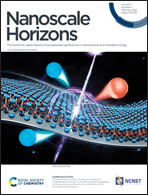
Nanoscale Horizons
Navigating the Cutting Edge of NanoscienceNanoscale Horizons is an esteemed journal published by the Royal Society of Chemistry, focusing on cutting-edge research in the field of nanoscale materials and their applications. Established in 2016, this journal quickly gained prominence, achieving a Q1 ranking in Materials Science (miscellaneous) and a notable rank of #32 out of 463 in the Scopus index, placing it in the 93rd percentile among its peers. With its rigorous peer-review process and commitment to disseminating high-impact research, Nanoscale Horizons serves as a vital platform for sharing innovative discoveries and interdisciplinary advancements. Researchers and professionals are invited to explore the exciting developments in nanotechnology through this publication, fostering collaboration and knowledge exchange in an ever-evolving field. Though currently not open access, the journal ensures that significant research findings are made available to a diverse audience keen on advancing materials science.

JOURNAL OF CLUSTER SCIENCE
Innovating Insights Across Chemistry and PhysicsJOURNAL OF CLUSTER SCIENCE, published by SPRINGER/PLENUM PUBLISHERS, is a prominent and influential journal in the fields of Biochemistry, Chemistry, Condensed Matter Physics, and Materials Science. With an ISSN of 1040-7278 and E-ISSN of 1572-8862, this journal has been contributing to scientific discourse since its inception in 1990 and continues to publish cutting-edge research through 2024. It holds a respectable position in the academic landscape with its category quartiles indicating a Q3 ranking in Biochemistry and Q2 rankings in Chemistry, Condensed Matter Physics, and Materials Science as of 2023. The journal's noteworthy Scopus rankings further underscore its relevance, particularly a rank of #82 in Condensed Matter Physics, showcasing its impact and the quality of research disseminated. Although it does not currently offer open access options, it remains a key resource for researchers, professionals, and students who are invested in understanding the complexities of cluster science and its interdisciplinary applications.

Micro & Nano Letters
Pioneering research at the forefront of technology.Micro & Nano Letters is a prominent open-access journal published by WILEY, dedicated to advancing the fields of micro and nanoscale science and technology. Since its inception in 2007, the journal has been a valuable resource for researchers, professionals, and students, delivering high-quality research that supports innovation and collaboration in bioengineering, biomedical engineering, condensed matter physics, materials science, and nanoscience. With an impact factor that reflects its growing influence, Micro & Nano Letters has earned recognition in various Scopus categories, including a Q3 ranking in both Condensed Matter Physics and Materials Science as of 2023. Its commitment to open access, established in 2021, ensures that the latest developments in micro- and nanotechnologies are accessible to a global audience, fostering a multidisciplinary dialogue across academia and industry. The journal continues to play a critical role in disseminating cutting-edge research and promoting technological advancements worldwide.